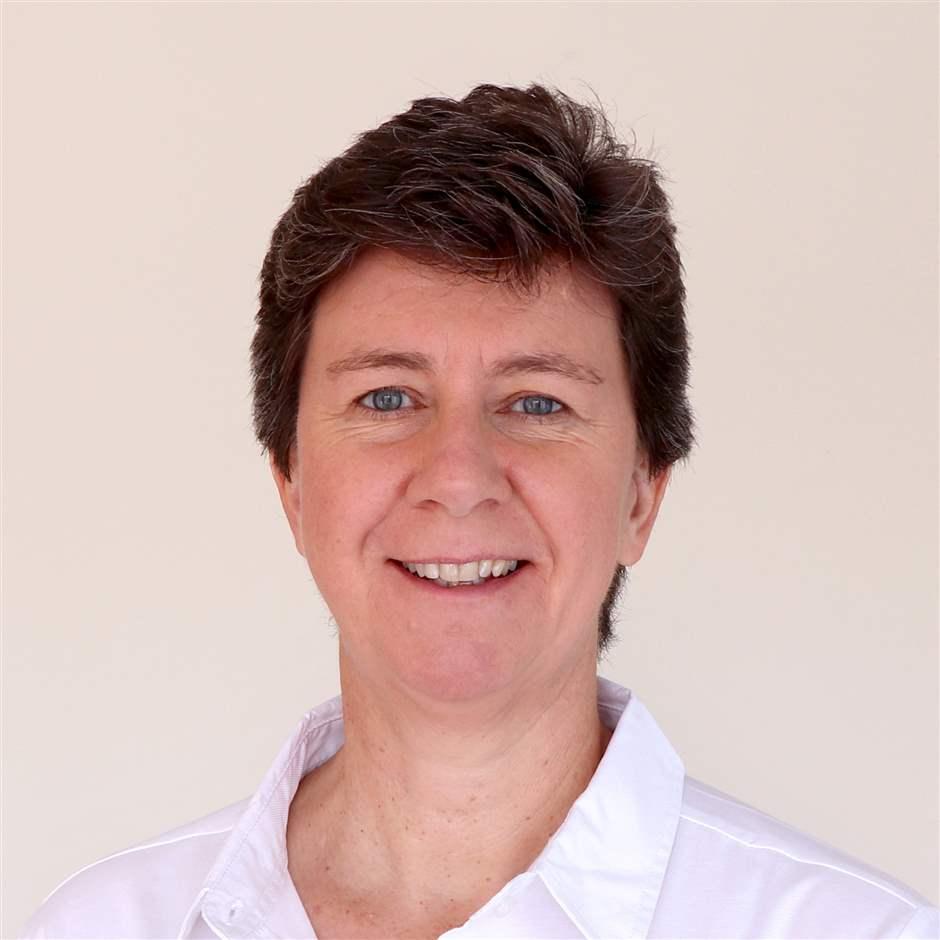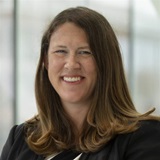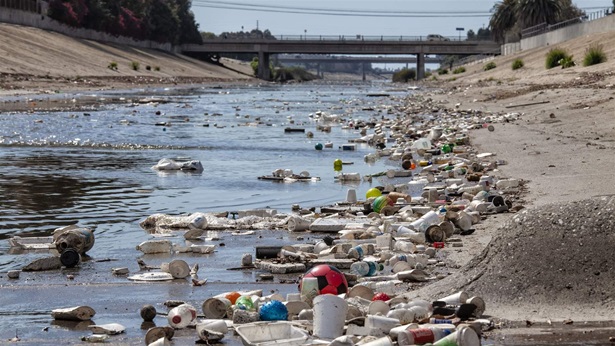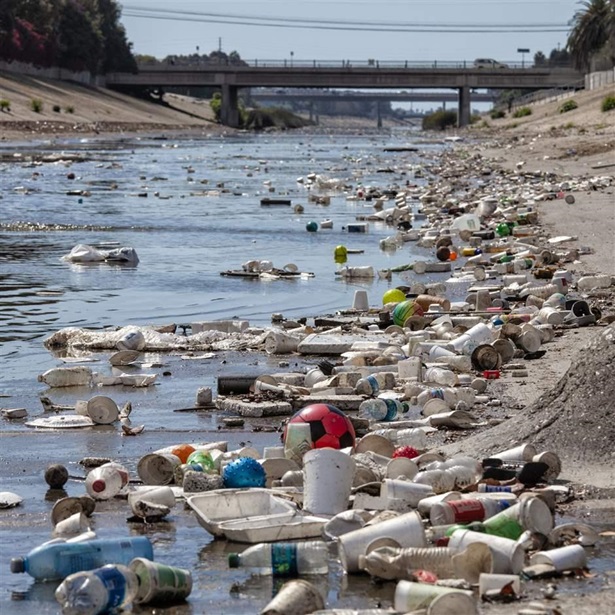Plastic Pollution: ‘If We Can Solve It for South Africa, There’s a Lot to Be Learned’
Nation is the first to use Pathways tool to evaluate strategies to reduce pollution
The Pew Charitable Trusts’ 2020 report “Breaking the Plastic Wave,” a first-of-its-kind global analysis of ocean plastic pollution, found that solutions exist to reduce annual flows of plastic into the ocean by about 80% by 2040.
Recognizing that appropriate solutions will vary by location, Pew and the University of Oxford created the Breaking the Plastic Wave Pathways Tool (“Pathways”), which considers local context when evaluating different approaches to reducing plastic pollution.
The Council for Scientific and Industrial Research (CSIR), a leading research organization in South Africa, was the first to use Pathways to model how materials flow through the country’s plastics value chain and evaluate the effects of policies and strategies to reduce plastic pollution.
This interview with Dr. Linda Godfrey, principal scientist at the CSIR and an associate professor at South Africa’s North-West University, was edited for length and clarity.
Q: Let’s start by learning more about your background—and your interest in working on ocean plastic pollution.
A: I’ve been working as an environmental scientist for nearly 30 years now, and I’m particularly passionate about how we address the waste problem in South Africa—and the African continent in general.
So, for me, when this project came up around developing an evidence-based strategy to mitigate the leakage of plastic into the environment, it just made absolute sense to be part of it and to make sure that developing countries in Africa were represented in the “Breaking the Plastic Wave” study.
One’s always got to be very careful in global studies: Very often the best available data is from developed countries—the global north—and I really wanted to make sure that the issues we’re facing in Africa were represented in this study. It was really important for me that this global model represented the diversity of issues that we’re actually seeing on our continent.
Q: How big an issue is plastic pollution in Africa?
A: Plastic pollution has become very visible across the continent, including along our coastlines. I don’t want to generalize and say that it’s the same across the continent, but I think many of the issues that we’re seeing around plastic are very similar. We have to only look to the plastic pollution in Southeast Asia to realize where Africa is headed if we don’t address the issue now. There’s always been this debate around “Is plastic pollution an upstream consumption issue or is it a downstream waste management issue?” The “Breaking the Plastic Wave” project framed it by saying there are different intervention levers—with different groups advocating for different levers to be pulled, depending on their own mandates and their own objectives. But the global study showed us that there’s no single intervention—it will require addressing both upstream consumption and downstream waste management to reduce plastic leakage.
Q: How do you hope the data from Pathways will drive action in South Africa?
A: Well, first of all, I think the “Breaking the Plastic Wave” report and the Pathways tool provide every country with an evidence-based approach, once and for all, to solving the plastic waste problem. With just that alone there’s enough information for countries to take action.
What we wanted to do in South Africa was to say “OK, it’s great having this global study, but are there unique issues for our country that we need to be thinking about? Will our response to this problem be slightly different from what we’re seeing at the global level?”
That’s why I was particularly keen to partner with Pew and with Oxford University. We wanted to see if we could apply this model at a more local scale, at the country level, for South Africa. Does the model still apply, or is our plastics system very different? Are there things that we need to be aware of at a country level that perhaps we weren’t at a global level?
So I was just so pleased that Pew was prepared to take this work further with us to apply the model in South Africa. Now that we’ve built the capability domestically, we have the ability to work with other countries on the continent to run similar kind of initiatives through the CSIR’s #SolvePlasticsAfrica hub.
Q: What has surprised you most about the findings?
A: Initially, for me, it’s just the complexity of the problem, which is why taking a systems approach—which the Pathways model provides—just makes so much sense. Even though the model is about as simple as one can get, there are so many things you need to consider to make sure that you get the plastic flows through the system right, that you source and apply the right data.
I always worry about that: It’s so easy to just throw data into a model and then make sweeping statements in terms of what comes out of it. But a lot of rigor goes into this model, with the types of data that are required.
It’s a lot of work to get all of the data and to make sure that all stakeholders agree on the flows and the data that’s being used. But at the same time, when I see how important the datasets are—and obviously when I think about what comes from this in terms of the decisions that will be made and the intervention strategies that will be put in place—it just reiterates for me how important it is to have rigor in the data collection and to ensure that all stakeholders are comfortable with the flows and the data used. Otherwise, you can draw completely incorrect conclusions.
I think the other thing, which has really been great and that I’ve also really welcomed, is the co-development approach that Pew and Oxford University have taken with us. At the beginning we asked the question, “Can the model provide us with trade-offs?” That wasn’t necessarily an issue at a global scale, but as a developing country facing incredibly high levels of unemployment, it becomes very important.
Q: What do you mean by trade-offs?
A: We very often hear the plastics industry say, “If you put plastic bans in place, if you put other restrictions in place, it will result in job losses.” And we’ve just never had the evidence to be able to say, “Well, is that true, or is it not?”
And so we had a great discussion early on about this model providing us with trade-offs —such as, what approach would give us the least leakage of plastic into the environment, with the greatest opportunity for climate mitigation and the greatest opportunity for job creation, at the lowest cost? As a country, we need to be looking at those four indicators. So Oxford University worked on the model to allow us to come up with what we’re calling an Optimal System Change Scenario.
Q: What does that scenario do?
A: It models this “sweet spot” between the four criteria. That way, we can provide a strategy that considers key environmental, social and economic priorities for South Africa.
Q: Any other surprises?
A: The other thing that really surprised the team was just how big an issue pollution through open burning of plastic waste is in South Africa. Most of the attention to date has been on marine plastic pollution, because it’s so visible on our beaches, but that’s actually a relatively small component of plastic-related pollution in South Africa. There’s an urgency in addressing the other forms of plastic pollution, especially the open burning of waste.
Q: What’s the biggest challenge you’ve faced?
A: I think it’s been getting reliable data, even for South Africa. I think we’ve got fairly good data in comparison to many other developing countries—but even here we have gaps in data. The advantage of the Pathways tool is that when in-country data is missing, we can draw on what we have in the global model and the default archetype values. So, if South Africa doesn’t have its own data for a particular data point, we can say, “Well, is there another country that’s very similar? With similar kinds of conditions? Can we use the default archetype data for that country as proxy for South Africa data?”
I must say I’m really excited by what came out of this project, after a lot of hard work by the modelling team.
Q: Have you worked with other stakeholders on the project?
A: It was important for us to put a technical advisory group in place at the start, so that it’s not just us partnering with Pew and Oxford University as a research project.
This advisory group was made up of local stakeholders, including representatives from the plastics sector, to really make sure we had key people on board from the beginning. We needed broader buy-in to the process, the methodology and the data, so that by the time we got to the end of the project, there was trust in the model; there was trust in the data. We wanted there to be an understanding and acceptance that the results that came out of the model were based on the best available data and on plastic flows that reflected the real situation for South Africa.
Q: How did that go?
A: I mean, it’s easy to say you want to involve the key stakeholders, but it can be tricky because you’ve got very different stakeholders with very different needs.
Q: So how have you balanced their needs and made sure that everyone gets heard?
A: It was really around making sure we had open discussions and that essentially everybody saw this as something that’s intended to help. Ultimately, we’re all after the same thing, which is to reduce the leakage of plastic into the environment. So long as we kept that in mind as our objective, we could all work together and all pull in the same direction.
Q: What’s your long-term vision for this work?
A: We now have—in addition to other in-house modelling capabilities—the ability to run the Pathways model. We understand the data requirements and the importance of bringing stakeholders into the process. So, our thinking is to apply this learning, through the CSIR’s #SolvePlasticsAfrica hub, to other countries in Africa that want to address their plastic pollution. We want to assist them in producing evidence-based strategies to address plastic pollution, based on their specific circumstances and, where available, their data.
Q: What gives you hope that the plastic pollution problem can be solved?
A: The growing awareness is one, I think. So many people want to solve the plastic pollution problem. People haven’t thrown their hands up and said, “Well, you know there’s nothing we can do about it, so we’ll just continue to live surrounded by waste.” People want to solve the problem.
I think we’re making strides. We’re saying, “If we can’t do it in the same way that you would in the global north, are there ways that we can still do it here—differently and appropriately for South Africa?”
I think that if we can solve it for South Africa, there’s a lot to be learned about how it can be solved in other developing countries.
But again, you know, we need to recognize that every country faces its own unique challenges. And that’s the beauty of the Pathways model: It considers the specific issues of a country, the available data from that country, and then provides an evidence-based strategy and a set of interventions specifically for that country, based on the local plastics value chain and pathways as well as the state of waste management in the country.
I’m excited to see how other countries will learn from, and benefit from, the Pathways tool and the guidance it can provide in solving plastic pollution.











